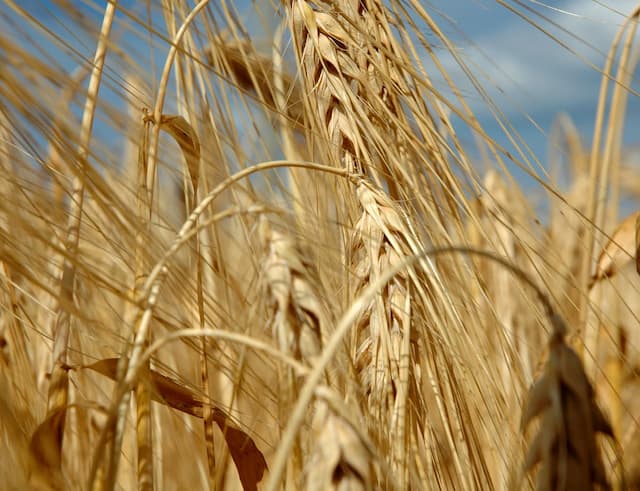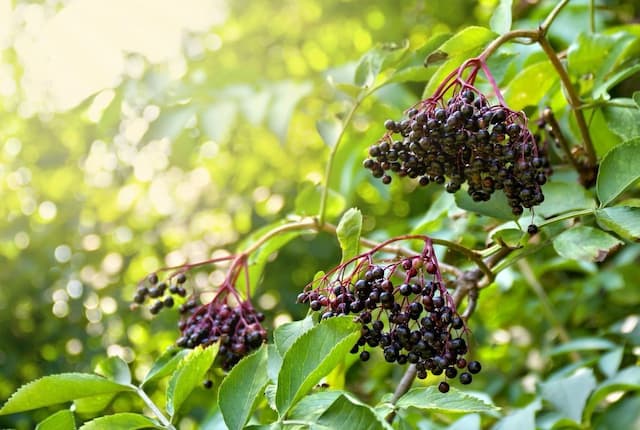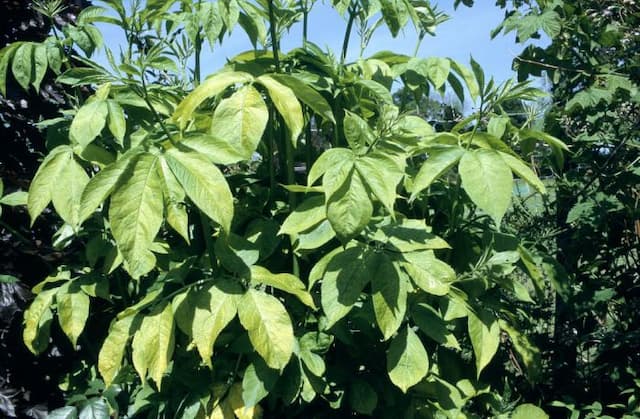Snowball Bush Viburnum opulus 'Roseum'

ABOUT
Viburnum opulus 'Roseum', commonly known as the snowball bush, features striking, ball-shaped clusters of flowers that resemble snowballs, which is how it gets its colloquial name. These blooms have a lush, white color, and as the plant matures during the season, the flowers can develop a blush of pink. The snowball bush has serrated, maple-like leaves that provide a dense, lush foliage. Its leaves are vibrant green in summer, but they transform into shades of red and purple as the seasons transition to autumn, offering an aesthetically pleasing change in color. The snowball bush is deciduous, indicating that it sheds its leaves annually. This plant is a popular ornamental choice in gardens due to its delightful floral display and foliage.
About this plant
 Names
NamesFamily
Adoxaceae.
Synonyms
Eastern Snowball, Snowball Bush, European Cranberrybush, Guelder-Rose.
Common names
Viburnum opulus var. sterile, Viburnum opulus 'Sterile'.
 Toxicity
ToxicityTo humans
The Snowball Bush, which is another name for Viburnum opulus 'Roseum', contains toxic substances. Although it is generally considered to have a low level of toxicity for humans, ingesting parts of the plant can cause mild to moderate symptoms. The plant contains substances known as triterpenoid saponins, which can be irritating to the mucous membranes when ingested, leading to symptoms such as nausea, vomiting, diarrhea, and abdominal pain. In severe cases, the ingestion of large quantities could potentially cause dizziness and confusion. It is always advisable to avoid consuming any part of the Snowball Bush, and to keep it out of reach of children who might be tempted to eat its attractive berries.
To pets
The Snowball Bush can also be toxic to pets such as dogs and cats, although it typically has a low level of toxicity. The plant contains triterpenoid saponins, which when ingested, can lead to gastrointestinal symptoms such as vomiting, diarrhea, and abdominal pain in pets. While it is uncommon, severe poisoning can cause more serious symptoms such as lethargy and weakness. It is recommended to keep pets away from the Snowball Bush and to contact a veterinarian if you suspect your pet has ingested part of the plant.
 Characteristics
CharacteristicsLife cycle
Perennials
Foliage type
Deciduous
Color of leaves
Green
Flower color
White
Height
10-15 feet (3-4.5 meters)
Spread
10-15 feet (3-4.5 meters)
Plant type
Shrub
Hardiness zones
3-8
Native area
Europe, Asia, Africa
Benefits
 General Benefits
General Benefits- Landscape Aesthetics: With its round, snowball-like clusters of flowers, Viburnum opulus 'Roseum', commonly known as "European Snowball Bush," vastly enhances garden aesthetics.
- Wildlife Attraction: The shrub provides a habitat and food source for various birds and insects.
- Seasonal Interest: It offers white to softly greenish-white flowers in spring and red ornamental berries in the fall.
- Privacy Screen: It can be used to create natural privacy screens or hedges in landscapes due to its dense growth habit.
- Ease of Care: The European Snowball Bush is known for being hardy and relatively low-maintenance, requiring minimal upkeep once established.
- Soil Adaptability: It is adaptable to a wide range of soil conditions.
- Tolerance: The plant is tolerant of different climates and can survive in cold temperatures once fully grown.
 Medical Properties
Medical Properties- Antispasmodic: May help in relieving muscle spasms and cramps.
- Astringent: Has been used traditionally for its potential to constrict tissues and reduce bleeding and inflammation.
- Sedative: May have calming effects that could potentially help with nervous tension or insomnia.
- Diuretic: Sometimes used in traditional medicine with the aim to promote the excretion of urine.
 Air-purifying Qualities
Air-purifying QualitiesThis plant is not specifically known for air purifying qualities.
 Other Uses
Other Uses- Viburnum opulus 'Roseum', commonly known as Snowball Bush, can be used for creating natural dyes, with various parts of the plant producing different hues.
- In some cultures, the branches are used in handicrafts to make items such as small baskets, due to their flexible nature when young.
- The dense foliage of the Snowball Bush provides excellent cover for small birds, offering protection from predators and harsh weather.
- The strong branches can be used for creating rustic, informal garden structures like trellises or arbors when mature and sturdy.
- The ornamental value of this plant makes it a popular choice for bonsai creation, with enthusiasts valuing the texture and color of its foliage.
- Fallen viburnum leaves can be collected and added to compost heaps, where they contribute valuable nutrients as they decompose.
- The vibrant autumn colors of the Snowball Bush make it a natural choice for use in fall-themed floral arrangements and decorations.
- In landscape design, the plant is often used as a natural snow fence, with its dense growth helping to trap and accumulate snowdrifts.
- The Snowball Bush can be employed as a natural screen or hedge, creating privacy in gardens and parks without the need for artificial fencing.
- During winter, the stark, intricate pattern of the bare branches against the snow can be a compelling feature in a garden's winter interest.
Interesting Facts
 Feng Shui
Feng ShuiThe Snowball Bush is not used in Feng Shui practice.
 Zodiac Sign Compitability
Zodiac Sign CompitabilityThe Snowball Bush is not used in astrology practice.
 Plant Symbolism
Plant Symbolism- Unity: The clusters of flowers in the Viburnum opulus 'Roseum', also known as the Snowball Bush, represent togetherness and unity, as they stick closely together on a single stem.
- Protection: Traditionally, the Snowball Bush has been planted in gardens with the belief that it wards off negative energies, acting as a natural protector for the home.
- Rebirth and Renewal: As a shrub that blooms vibrantly in spring, the Snowball Bush is often seen as a symbol of rebirth and the renewal of nature after winter's dormancy.
- Abundance: The full, round blossoms of the Snowball Bush resemble coins, which can symbolize wealth, prosperity, and abundance.
- Purity and Innocence: The pure white flowers may also represent clarity, innocence, and purity, echoing the unblemished quality of its large blooms.
 Water
WaterThe Snowball Bush (Viburnum opulus 'Roseum') should be watered deeply to encourage root growth, and the soil should be allowed to dry out somewhat between waterings. During the first growing season, it's crucial to maintain a consistent watering schedule to establish a strong root system, typically watering once a week. Apply approximately 1 to 1.5 gallons of water for each watering, ensuring the water penetrates the soil to reach the roots. In subsequent years, water needs may decrease, but during prolonged dry spells, additional watering will be necessary. Adjust frequency during the winter or rainy seasons, as the plant requires less water.
 Light
LightThe Snowball Bush does best in full sun to partial shade. It thrives with at least four hours of direct sunlight each day but will appreciate some afternoon shade in hotter regions. Ideally, plant it in a spot where it gets morning sunlight and some protection from the intense late-day sun to prevent scorching.
 Temperature
TemperatureThe Snowball Bush is hardy and can typically withstand temperatures as low as -30°F and as high as 95°F. The ideal temperature range for promoting healthy growth is between 60°F and 80°F. Ensure that the plant is situated in a location where it can avoid extreme temperature fluctuations for optimum health.
 Pruning
PruningPrune the Snowball Bush after it flowers in the late spring to maintain shape and to remove any dead or diseased branches. Thinning out older branches every few years encourages new growth and more abundant blooms. The best time for pruning is immediately after the shrub has finished blooming to ensure flower production for the following year.
 Cleaning
CleaningAs needed
 Soil
SoilThe Snowball Bush prefers moist, well-drained soil enriched with organic matter, with an ideal pH range of 5.6 to 6.6. A mixture of loamy garden soil, peat or compost, and a smaller portion of sand for drainage creates an optimal growing medium for this plant.
 Repotting
RepottingThe Snowball Bush, being a large shrub, does not require frequent repotting and is typically planted directly in the ground where it can remain for many years without the need for transplanting.
 Humidity & Misting
Humidity & MistingThe Snowball Bush is adaptable to a range of humidity conditions and does not require specific humidity levels to thrive, making it a versatile choice for different climates.
 Suitable locations
Suitable locationsIndoor
Provide bright indirect light and ensure adequate room for growth.
Outdoor
Plant in well-draining soil; full sun to partial shade.
Hardiness zone
3-8 USDA
 Life cycle
Life cycleThe Viburnum opulus 'Roseum', commonly known as the Snowball Bush, begins its life as a seed which germinates in moist soil during the spring or early summer. After germination, the seedling grows into a young plant with characteristic lobed leaves, and within a few years, it will develop a robust root system and woody stems as it matures into an adult shrub. The Snowball Bush reaches full maturity when it starts flowering, typically producing large, dense clusters of sterile, greenish-white flowers that turn bright white and resemble snowballs as they mature. The flowering stage usually occurs in late spring, and although 'Roseum' does not produce fruit, its flowers attract various pollinators to the garden. Throughout its life, the shrub undergoes seasonal changes, losing its leaves in the fall and going dormant in winter, before resuming growth in the spring. This cycle continues yearly, with proper care and maintenance allowing the Snowball Bush to thrive for several decades.
 Propogation
PropogationPropogation time
Spring-Early Summer
Propogation: The most popular method of propagating the European Snowball bush, or Viburnum opulus 'Roseum', is through softwood cuttings taken in late spring or early summer. For this method, a gardener would select a healthy, new growth shoot that has not flowered and cut a 4-6 inch (about 10-15 cm) length, ensuring there are several leaf nodes present. The lower leaves are removed, and the cutting may be treated with a rooting hormone to encourage root development. The prepared cutting is then placed in a pot filled with a well-draining soil mix, ensuring at least one or two nodes are buried where roots can form. The pot is kept in a warm spot with indirect sunlight and constant humidity, achieved by covering it with a plastic bag or placing it in a propagator. After several weeks, once roots have formed and new growth indicates the cutting has established, it can be transferred to a larger pot or planted directly in the garden.



![Elder [Black Tower]](/_next/image?url=https%3A%2F%2Fplants-admin.emdemapps.com%2Fimages%2Fplants%2F%2Fimages%2F604b5cad99578.png&w=640&q=75)





